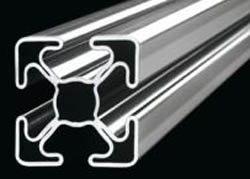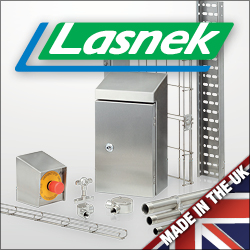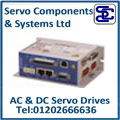
Posted to News on 7th Mar 2007, 19:43
Stainless steel profiles added to Item range
Due to the obvious benefits of flexibility and speed of construction, aluminium profile systems have, over the last 20 years or so, become the standard method of building special-purpose machines and much production equipment. However, there are still a substantial number of applications where aluminium is not considered suitable, such as food, some medical, corrosive and high-temperature environments.

Now Item is introducing a new 40x40 stainless steel profile, together with a range of stainless steel fasteners and T-slot nuts to suit, all of which are available from Machine Building Systems. The profile consists of two tightly-toleranced steel sheets 1.5mm thick that are folded in a continuous process by a very complex tool, then laser-welded together. The profile has four further continuous laser welds along the corner webs of the profile - a patented feature that enhances torsional rigidity and ensures good resistance to bending. Having the mechanical properties of steel makes it suitable for high-temperature applications of up to 200degC, whereas aluminium starts to lose strength at temperatures much above 100degC.
Like the aluminium profiles, the steel version has a dished surface that, when joints are tightened or parts attached, acts as an anti-vibration washer. It also uses its own version of the Item Standard-Fasteners and Universal-Fasteners that provide a large contact area, reducing points of peak stress that can otherwise result in a fastener starting to loosen. Users can also go one step further with the steel profile of course: once the framework is fully configured and final positions have been established, it is possible to weld the joints in place, making sure that nothing moves, ever!
Alternative to slotted plates
Significant sales are expected to food machinery manufacturers who, while they do not always welcome T-slots, nevertheless have areas in their machines where adjustment must be provided. In these areas expensive slotted plates must at present be used, which are no more hygienic than the far less expensive stainless steel profile.
Earthing
In general, bolt-together aluminium frameworks are non-conductive due to the anodised surface layer. This is sometimes a problem for users of aluminium systems. Although well-developed systems such as Item have proprietary parts available for ensuring earth-bonding across all joints, it can be a time-consuming process fitting them, especially when there are many struts in the framework. Some systems claim to have conductive joints whereby the anodised surface is broken to achieve conductivity but, in reality, many of these are only usually effective when the framework is first put together. In a relatively short time, natural surface corrosion occurs, which is, itself, non-conductive. Item's new steel profile, however, uses all-steel fixings that guarantee electrical conductivity over the longer term.
Corrosion resistance
Aluminium profiles can be quite well suited to harsh environments. Should there be any scratches or dents, an new protected surface is created by a natural oxidisation process. Unlike a painted fabricated-steel framework there is no unsightly rusting. Some environments do present challenging situations, but the BS304 grade stainless steel of the new Item profile is particularly suitable for use where chemicals or environmental conditions might attack aluminium.
Superior resistance to fatigue
Another property not very often considered is the relative failure modes of steel and aluminium. Obviously, a properly designed and constructed aluminium frame should not suffer fatigue failures - the profile sizes and numbers of fasteners should always be sufficient to prevent over-stressing. However, unforeseen circumstances do arise and the mechanical properties of steel are such that any failure in the profiles will occur long after significant visible deformation has taken place. So the new stainless steel profile may well be better suited to areas where loads are uncertain or unpredictable, or fatigue is likely to be a problem.
Surface appearance
There is little doubt that a properly-constructed aluminium frame looks superior to a fabricated and painted steel construction, especially after some years of use, because its anodised surface is easy to clean. However, when subjected to heavy impact, the anodised layer becomes damaged and attempts to 'repair' the damage are not always sufficiently successful. The new stainless-steel profile does not rely on a special surface layer, so scratches and small dents can easily be polished out.
Naturally, Item has ensured that the 8mm T-slot form is very similar to that in its Line-8 aluminium series, enabling the user to have access to a very wide range of readily-available compatible parts.


















